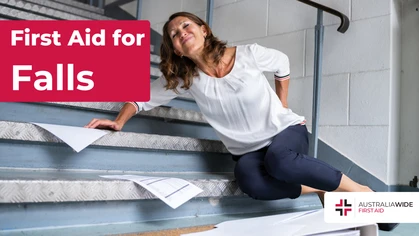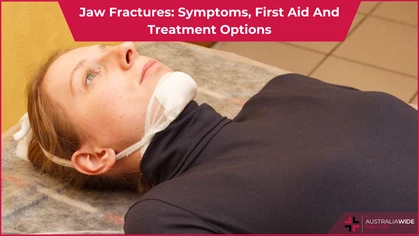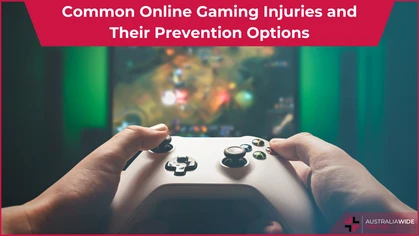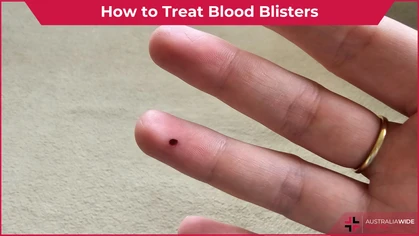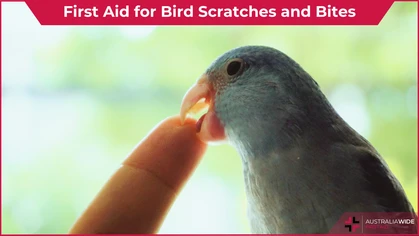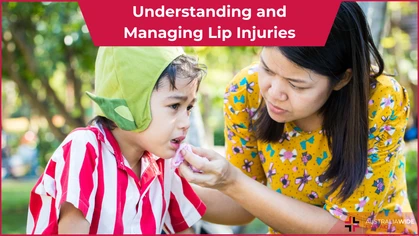Common Netball Injuries – Prevention and Treatment

Injury
 Netball is a fast-paced and physically demanding sport that requires agility, speed, and teamwork.
However, like any other sport, it comes with the risk of injuries.
Understanding these common injuries, along with prevention and treatment options, is crucial for players to stay healthy and continue enjoying the game.
Netball is a fast-paced and physically demanding sport that requires agility, speed, and teamwork.
However, like any other sport, it comes with the risk of injuries.
Understanding these common injuries, along with prevention and treatment options, is crucial for players to stay healthy and continue enjoying the game.
Injuries in Netball
Just like any sport, netball is not without risk of injury. Whether you are just starting out as a social player, or you are a professional athlete, injuries are common. Around 594,000 people over the age of 15 played netball during 2020-2021. If you were to include those who played netball in school, this number would be much higher. It’s estimated that the rate of injury is 14 injuries per 1,000 hours played. Out of those, 1,500 netballers were hospitalized due to their injuries in 2020-2021. As you can see in this graph, the highest number of hospitalisations during this period were for players aged 15-19, very closely followed by 10-14 and 20-24. These are critical periods during physical and mental development – a greater emphasis on safe play during these years is recommended. Age distribution of netball injury hospitalisations, 2020–21 from Australian Institute of Health and Welfare
Age distribution of netball injury hospitalisations, 2020–21 from Australian Institute of Health and Welfare
Common Netball Injuries
Due to the movements involved in netball, strain is placed on the limbs. In particular, the ankles, knees, wrists, and fingers, are at most risk of injury. Netball injury hospitalisations, by body part injured, as a proportion, 2020–21 from Australian Institute of Health and Welfare
Lower limb injuries are the most common amongst professional netball players as well as recreational players, with soft-tissue injuries accounting for more than half of all hospitalisations. This is followed by fractures, which represented over a third of all hospitalisation.
Netball injury hospitalisations, by body part injured, as a proportion, 2020–21 from Australian Institute of Health and Welfare
Lower limb injuries are the most common amongst professional netball players as well as recreational players, with soft-tissue injuries accounting for more than half of all hospitalisations. This is followed by fractures, which represented over a third of all hospitalisation.
 Netball injury hospitalisations, by type of injury as a proportion, 2020–21 from Australian Institute of Health and Welfare
Ankle Sprains
Ankle sprains are among the most prevalent injuries in netball. Quick changes in direction, jumping, and landing awkwardly can cause the ligaments supporting the ankle to stretch or tear, resulting in pain, swelling, and difficulty bearing weight.
Knee Injuries
Netball involves a lot of sudden stops, pivots, and jumps, putting significant stress on the knees. Injuries such as anterior cruciate ligament (ACL) tears, meniscal tears, and patellar tendonitis are not uncommon among netball players.
Finger and Hand Injuries
The nature of the game involves a lot of catching, passing, and defending, which puts players at risk of finger fractures, dislocations, and ligament injuries. These injuries can occur when the ball hits the hand or when players attempt to intercept passes.
Shoulder Injuries
Overhead throwing actions during passing and shooting can lead to shoulder injuries such as rotator cuff strains, tendonitis, and shoulder impingement syndrome. Collisions with other players or falling onto an outstretched arm can also cause shoulder dislocations or fractures.
Muscle Strains
Sprinting, sudden stops, and changes in direction can strain muscles in the legs, particularly the hamstrings and quadriceps. Overuse and inadequate warm-up can also contribute to muscle strains.
Netball injury hospitalisations, by type of injury as a proportion, 2020–21 from Australian Institute of Health and Welfare
Ankle Sprains
Ankle sprains are among the most prevalent injuries in netball. Quick changes in direction, jumping, and landing awkwardly can cause the ligaments supporting the ankle to stretch or tear, resulting in pain, swelling, and difficulty bearing weight.
Knee Injuries
Netball involves a lot of sudden stops, pivots, and jumps, putting significant stress on the knees. Injuries such as anterior cruciate ligament (ACL) tears, meniscal tears, and patellar tendonitis are not uncommon among netball players.
Finger and Hand Injuries
The nature of the game involves a lot of catching, passing, and defending, which puts players at risk of finger fractures, dislocations, and ligament injuries. These injuries can occur when the ball hits the hand or when players attempt to intercept passes.
Shoulder Injuries
Overhead throwing actions during passing and shooting can lead to shoulder injuries such as rotator cuff strains, tendonitis, and shoulder impingement syndrome. Collisions with other players or falling onto an outstretched arm can also cause shoulder dislocations or fractures.
Muscle Strains
Sprinting, sudden stops, and changes in direction can strain muscles in the legs, particularly the hamstrings and quadriceps. Overuse and inadequate warm-up can also contribute to muscle strains.
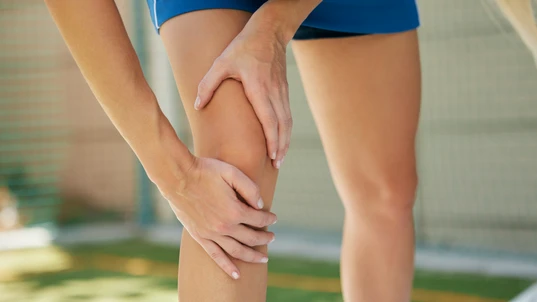
Prevention Strategies
Overexertion is reported as the most common cause of any netball injury. As such, it is wise to focus on prevention strategies that players can incorporate into their regular netball routine. Cause of injury as a proportion when specified, netball injury hospitalisations, 2020–21 from Australian Institute of Health and Welfare
Warm-Up and Stretching
A thorough warm-up routine before training and matches is essential to prepare the body for the demands of netball. Dynamic stretches that mimic the movements of the game can help increase flexibility and reduce the risk of injury.
The KNEE Program from Netball Australia is an on-court warm-up program designed specifically to enhance movement efficiency and prevent injury. They have recognised the need for tailored approaches for different ability levels, as well as recognising the significant amount of, and impact of, leg injuries in netball players.
Strength and Conditioning
Incorporating strength training exercises targeting the muscles around the ankles, knees, shoulders, and core can improve stability and reduce the risk of injury. Focus on exercises that build strength, balance, and proprioception.
Proper Technique
Coaches should emphasize proper technique for jumping, landing, pivoting, and passing to minimize stress on vulnerable joints and tissues. Players should also be mindful of their positioning and avoid putting themselves in compromising situations.
Protective Gear
Wearing supportive footwear with good ankle and arch support can help reduce the risk of ankle sprains. Additionally, finger splints or tape can provide support and stability for the fingers and hands during play.
Rest and Recovery
Adequate rest and recovery are essential for allowing the body to heal and adapt to the physical demands of training and competition. Encourage players to listen to their bodies and seek medical attention if they experience persistent pain or discomfort.
Cause of injury as a proportion when specified, netball injury hospitalisations, 2020–21 from Australian Institute of Health and Welfare
Warm-Up and Stretching
A thorough warm-up routine before training and matches is essential to prepare the body for the demands of netball. Dynamic stretches that mimic the movements of the game can help increase flexibility and reduce the risk of injury.
The KNEE Program from Netball Australia is an on-court warm-up program designed specifically to enhance movement efficiency and prevent injury. They have recognised the need for tailored approaches for different ability levels, as well as recognising the significant amount of, and impact of, leg injuries in netball players.
Strength and Conditioning
Incorporating strength training exercises targeting the muscles around the ankles, knees, shoulders, and core can improve stability and reduce the risk of injury. Focus on exercises that build strength, balance, and proprioception.
Proper Technique
Coaches should emphasize proper technique for jumping, landing, pivoting, and passing to minimize stress on vulnerable joints and tissues. Players should also be mindful of their positioning and avoid putting themselves in compromising situations.
Protective Gear
Wearing supportive footwear with good ankle and arch support can help reduce the risk of ankle sprains. Additionally, finger splints or tape can provide support and stability for the fingers and hands during play.
Rest and Recovery
Adequate rest and recovery are essential for allowing the body to heal and adapt to the physical demands of training and competition. Encourage players to listen to their bodies and seek medical attention if they experience persistent pain or discomfort.
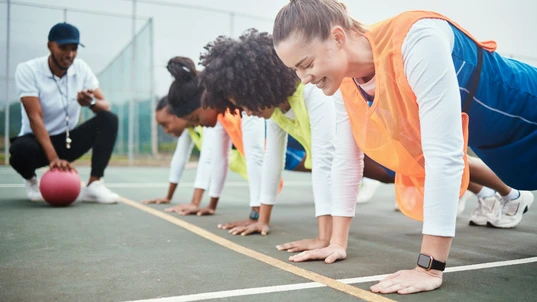
First Aid and Treatment for Netball Injuries
R.I.C.E Method Rest, Ice, Compression, and Elevation are the cornerstone of initial treatment for most netball injuries. Resting the injured area, applying ice packs, compressing with bandages, and elevating the affected limb can help reduce swelling and pain. Physical Therapy Rehabilitation exercises prescribed by a physical therapist can help restore strength, flexibility, and range of motion after an injury. A structured rehabilitation program tailored to the individual's needs is crucial for a safe and effective recovery. Bracing and Taping Depending on how severe the injury is, bracing or taping may be recommended to provide support and stability to the affected joint or limb during activity. This can help prevent further injury and facilitate return to play. Pain Management Over-the-counter pain relievers such as ibuprofen or acetaminophen can help reduce pain, swelling, and discomfort associated with netball injuries. However, it's essential to follow the recommended dosage and consult a healthcare professional if pain persists. Surgery In cases of severe injuries such as ACL tears or significant ligament damage, surgical intervention may be necessary to repair the injured tissues. Rehabilitation following surgery is typically intensive and requires close supervision by medical professionals.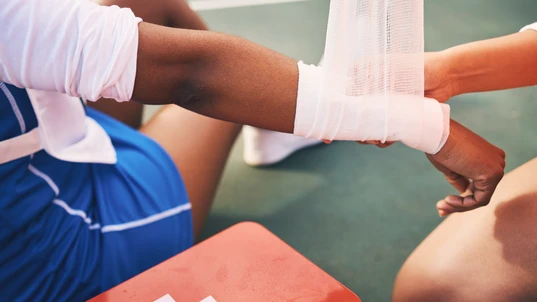
Conclusion
In conclusion, while netball offers numerous physical and social benefits, it's essential for players to be aware of the potential for injuries and take proactive measures to prevent them. By incorporating proper warm-up routines, strength training, and maintaining good technique, players can reduce their risk of injury and continue to enjoy the sport safely. Additionally, seeking prompt medical attention and adhering to a comprehensive rehabilitation program are crucial steps in ensuring a full recovery from netball injuries.
Originally published at
https://www.australiawidefirstaid.com.au/resources/common-netball-injuries-prevention-and-treatment
as part of the Australia Wide First Aid Articles Library
